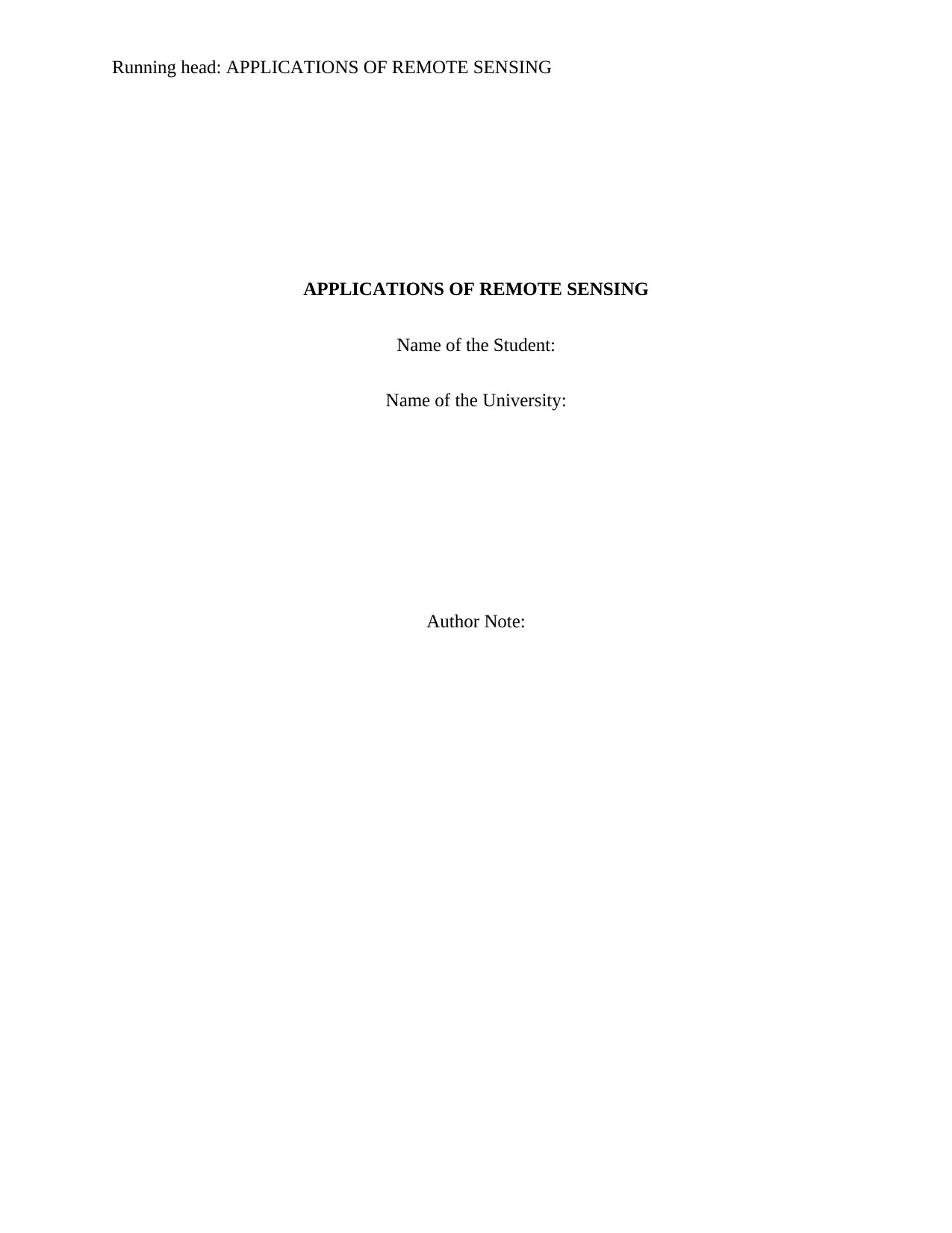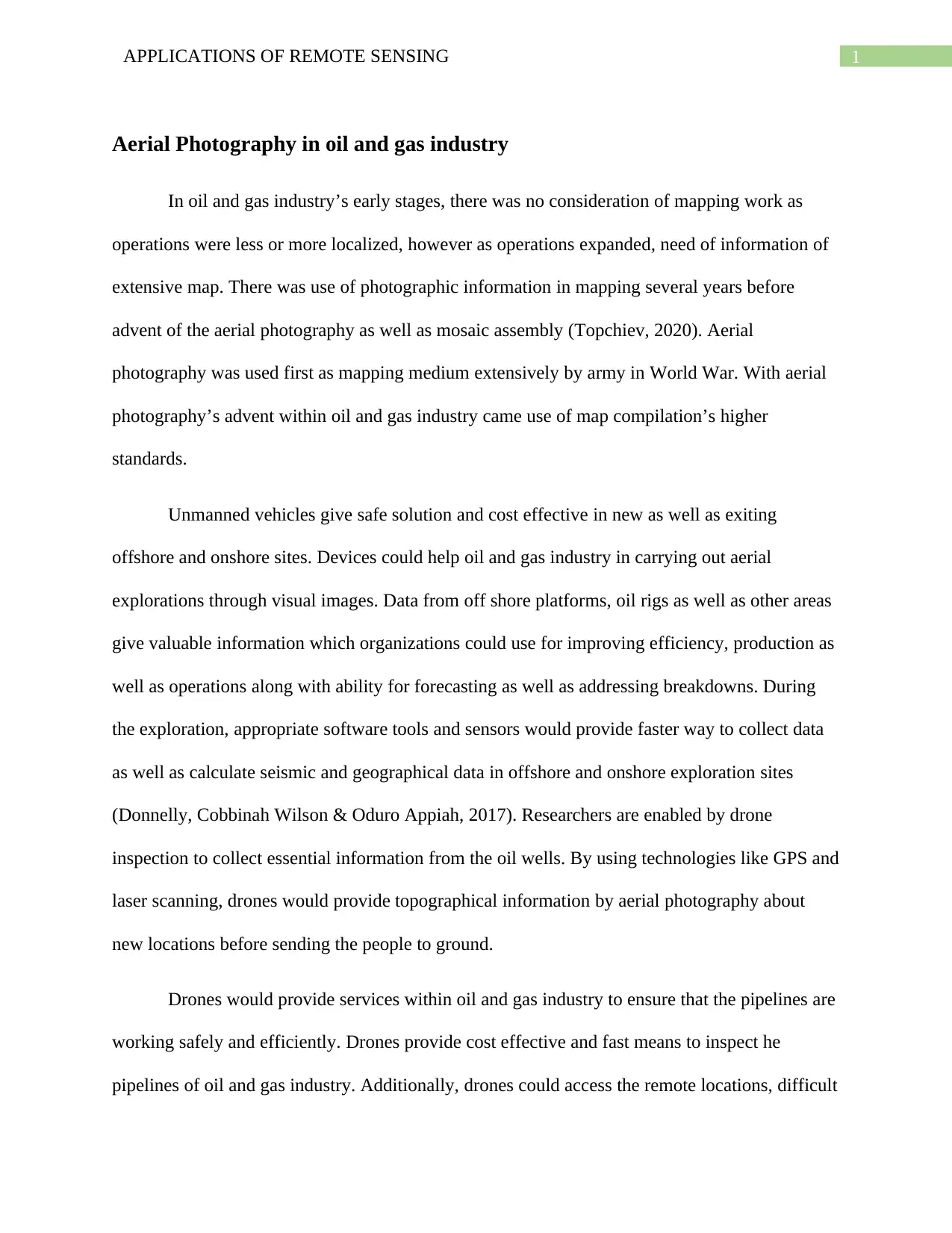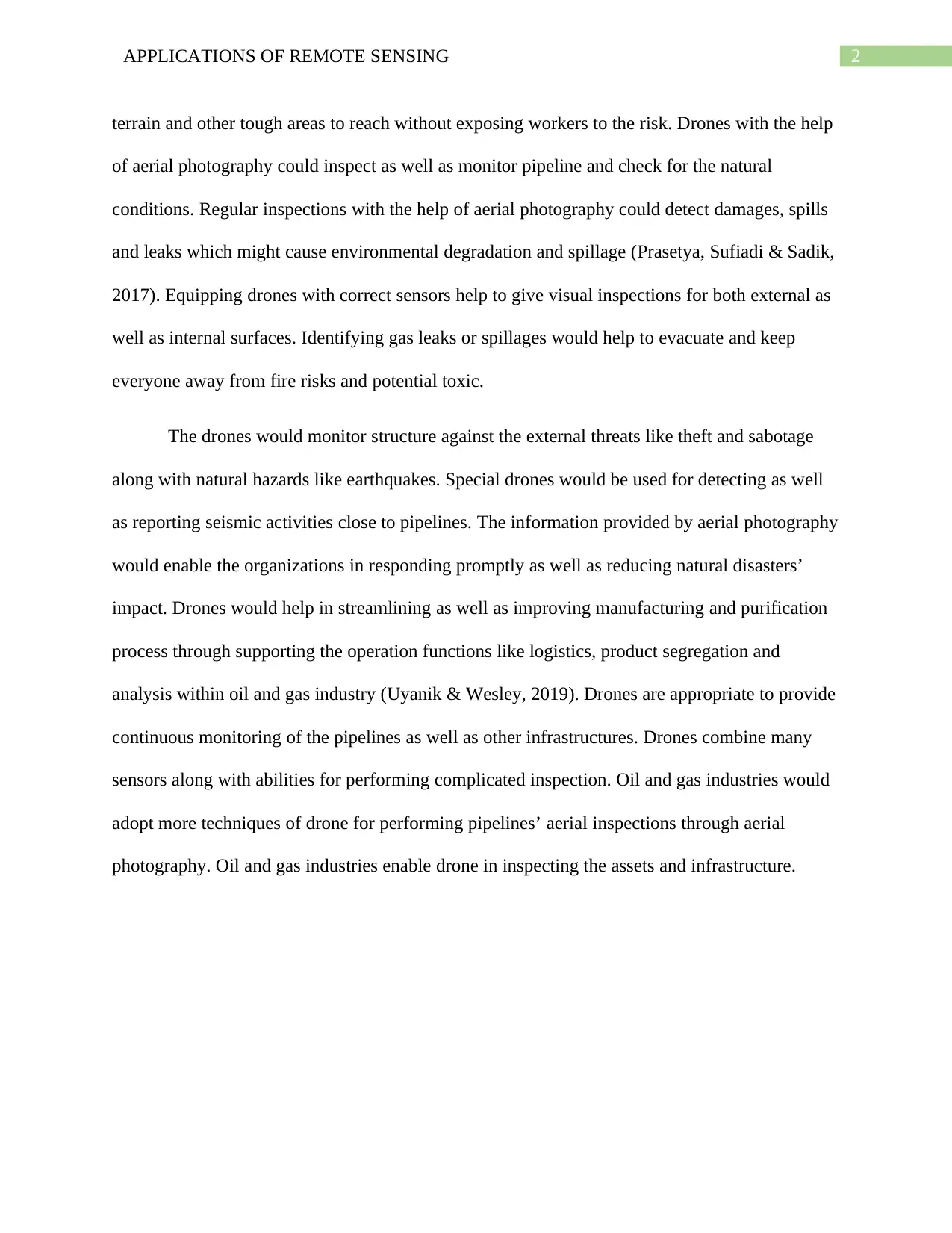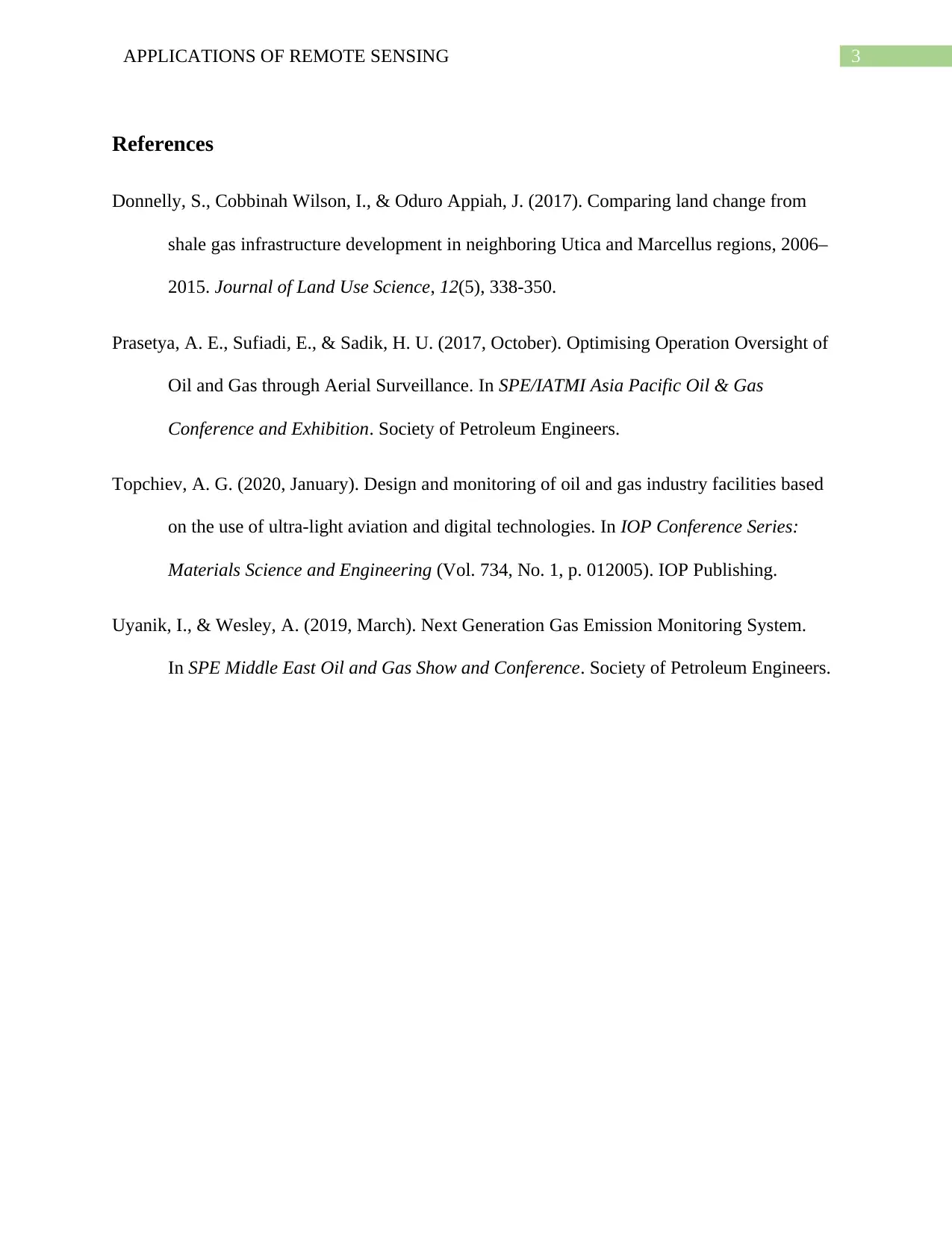Analysis of Remote Sensing Applications in Oil and Gas Industry
VerifiedAdded on 2022/09/12
|4
|802
|18
Report
AI Summary
This report examines the applications of remote sensing technologies, focusing on aerial photography and drone usage, within the oil and gas industry. The study highlights the historical use of aerial photography for mapping and its evolution with the advent of unmanned vehicles. The report details how drones, equipped with various sensors, provide cost-effective and safe solutions for aerial explorations, data collection, and analysis in both offshore and onshore sites. It emphasizes the benefits of drones in pipeline inspections, detecting damages, spills, and leaks, as well as monitoring structures for external threats and seismic activities. Furthermore, the report discusses how remote sensing streamlines manufacturing and purification processes, improving operational functions such as logistics and product analysis. The conclusion stresses the increasing adoption of drone technologies for performing aerial inspections and asset monitoring in the oil and gas sector.
1 out of 4





![[object Object]](/_next/static/media/star-bottom.7253800d.svg)